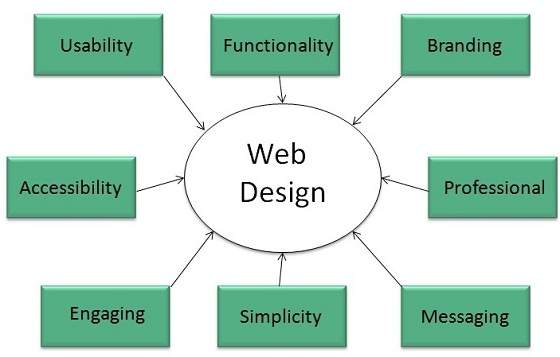
Web design has come a long way since the first site was published in 1991. With over one billion live websites on the internet today, it’s no surprise that this industry is here to stay. Wix is home to thousands of designers, enthusiasts, and professionals in the field of website design who are enabling the sector to reach new heights. So, if you’re here to learn more about the world of web design, you’ve come to the right place.
As a preliminary to learning how to design a website, this article will hone in on the role of web design and go over helpful tips by defining critical terms and ideas, and looking at examples that will give you further insight.
01. What exactly is web design?
Web design is the art of planning and arranging content on a website so that it can be shared and accessed online with the world. Web design is a type of digital design that decides how a website looks, including its colors, fonts, graphics, and user interface (see our guide on best practices for website design). It is a combination of aesthetic and functional elements. Today, creating a website is one of the pillars of having an online presence. As a result, web design is still as dynamic as ever. It is constantly evolving, including mobile apps and user interface design, to meet the growing needs of website owners and visitors alike.
Web design is often a team effort that brings together resources from related fields like statistics, SEO, and user experience (UX) design. Web designers will often bring together professionals from these areas who can optimize performance and focus on the larger process and outcome.
02. Web design vs. website development
The first step in our web design journey is to clarify the difference between web design and website development, since the two are closely related and often (mistakenly) used interchangeably:
A website’s visual design and user experience are referred to as web design. The remainder of this article will focus on web design in greater detail. Website development refers to the building and maintenance of a website’s structure, and involves intricate coding systems that ensure the website functions properly.
The fundamental markup languages that web developers most frequently use to construct a website are as follows: HTML or HyperText Markup Language, is a coding language used to create the front end of websites. It is written so that web browsers can incorporate it into the websites we see online to include the structure of a page. CSS, or Cascading Style Sheets, is a design language for programming that includes all of the relevant information about how a webpage looks on the screen. CSS works with HTML to design the style and formatting of a website or page, including the layout, fonts, padding, and more.
However, if you use a CMS (a computer software application that manages the digital content of a website) you can learn how to make a website and make updates without the knowledge of using code. Wix is an illustration of a content management system (CMS), which is a user-friendly platform for website content creation. You can even use artificial intelligence to design a website on Wix, which also provides a cutting-edge solution for web designers called Wix Studio.
03. Web design tools
Web designers require their own unique set of tools to create and design. There are a few key elements that will determine which types you’ll use, and at which stage you’ll need them.
Consider the following questions: How big is your team? What kind of budget do you have? What kind of technical requirements will your site need? What is the overall aesthetic you wish to achieve? Will you create an adaptive or responsive design? What is your website’s purpose? The answers to these questions will also help you understand which kind of website builder you want to work with, or other design software tools.
Website builders like Wix are great because they don’t need any programming and come with a variety of pre-made templates for every industry. Website builders are a great starting point for new web designers because they can be easily customized in terms of both their visual elements and their functionality. For more experienced web designers, Wix Studio is the ideal platform with more advanced features for layouts, interactions, effects and designed assets.
Wireframes, custom features, and design elements can be created using design software like Figma, Photoshop, and Sketch. However, the major difference with these tools is that all elements must be converted to code. While these tools provide web developers with creative flexibility and collaborative integrations such as hand-off features, they may necessitate additional time, expertise, and resources. As you gain more experience with a range of web design tools, you’ll know which are best suited to you and your business needs.
04. Design principles applied to websites
Understanding what good web design is and how to achieve it is one of the first steps in understanding what web design is. We can have a look at the principles of design for reference, a theory practiced by artists and designers which outline the visual qualities any composition should aim for. Applying these principles to web design can help beginner and advanced web designers alike achieve a site with a harmonious look and feel.
Of course, these are not strict rules to follow, but rather guidelines to learn how we can apply the various elements of a website’s design. “Learn the rules like a pro, so you can break them like an artist,” Picasso said. Once you understand the goals of web design and become more comfortable with each website element, you can tweak the approach with a more creative touch.
Balance
Keeping a composition’s visual balance means ensuring that no one element is too dominant. This can be applied to web design by drawing an imaginary line down the center of a webpage and arranging elements so that the visual weight is equal on both sides.
There are two main ways to achieve balance on a website:
Symmetrical balance is when the visual weight on both sides of that line are equal and arranged like a mirror image. This can elicit feelings of harmony, beauty, and consistency in your web design. Asymmetrical balance is when the visual weight is equal on both sides, but the composition and order of elements will vary (i.e., not a mirror image). A balanced asymmetrical design is considered a modern website design approach and will create a more dynamic experience for the viewer, while maintaining a harmonious composition.
Contrast
Contrast refers to arranging juxtaposing elements in a way that highlights their differences: dark and light, smooth and rough, large and small. When contrast is in the picture, it’s dramatic and exciting qualities can captivate visitors as they scroll through your site.
Emphasis
We are reminded by the principle of emphasis that not all aspects of a website are created equal. Whether it’s your logo, a CTA, or an image; if there’s something on your webpage that visitors should notice first, applying the principle of emphasis with the use of bright color, animation or size will ensure it’s the dominant aspect of your composition.
Movement
When applied to web design, movement is what guides visitors from one element to the next. You can control how the viewer’s eye moves through your website by controlling the size, orientation, and order of the elements on each page. This is especially noticeable with techniques like website gamification.











